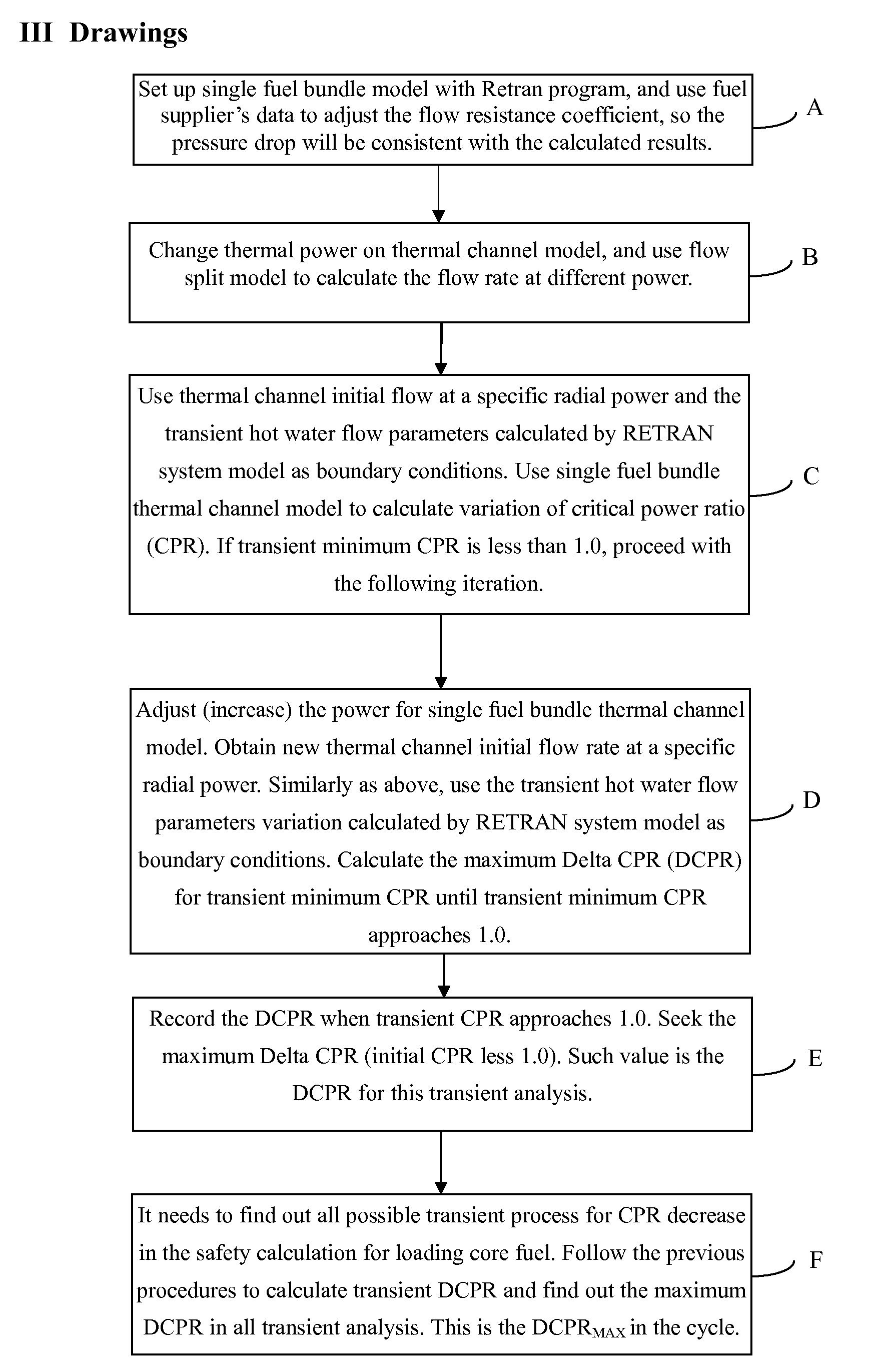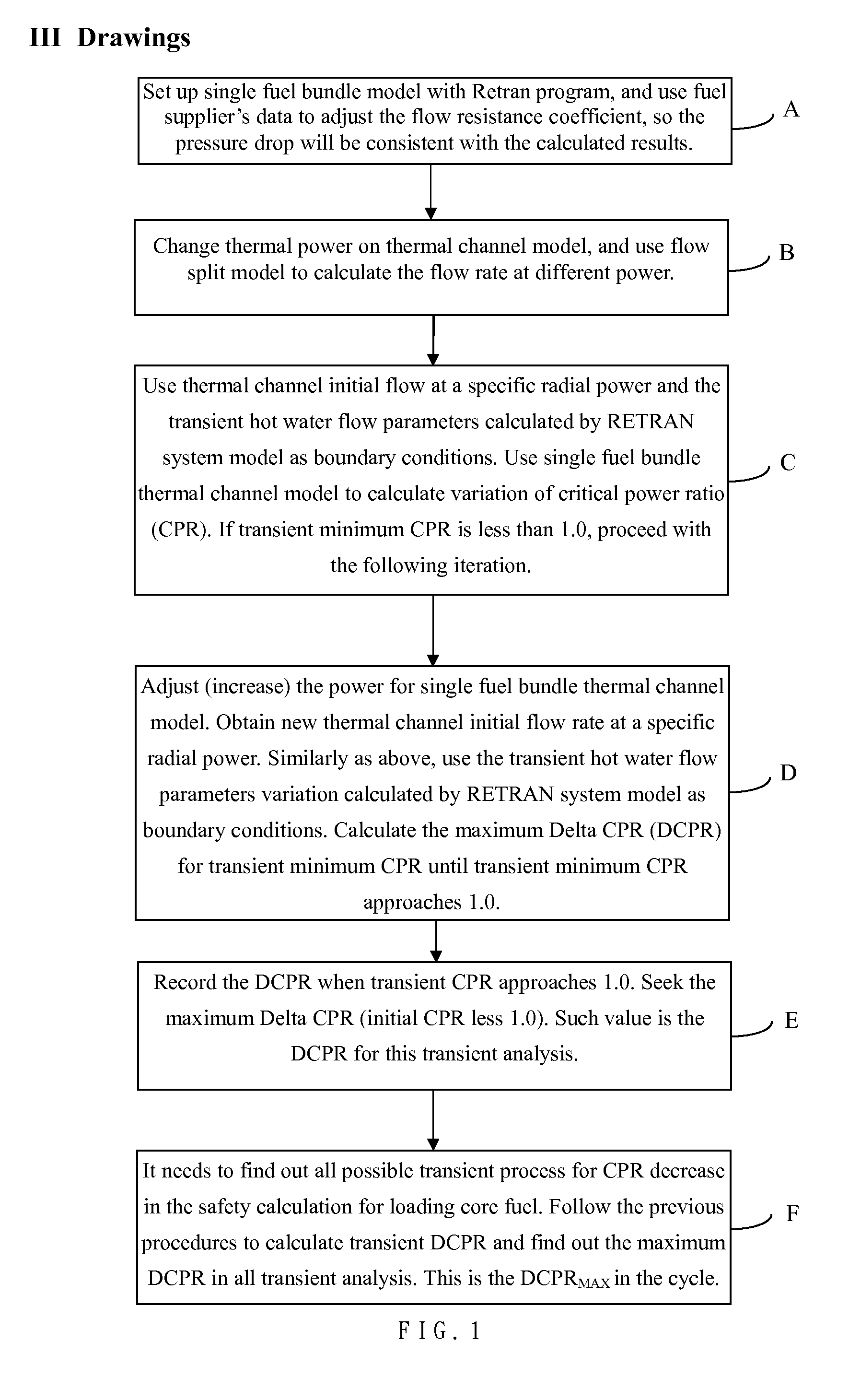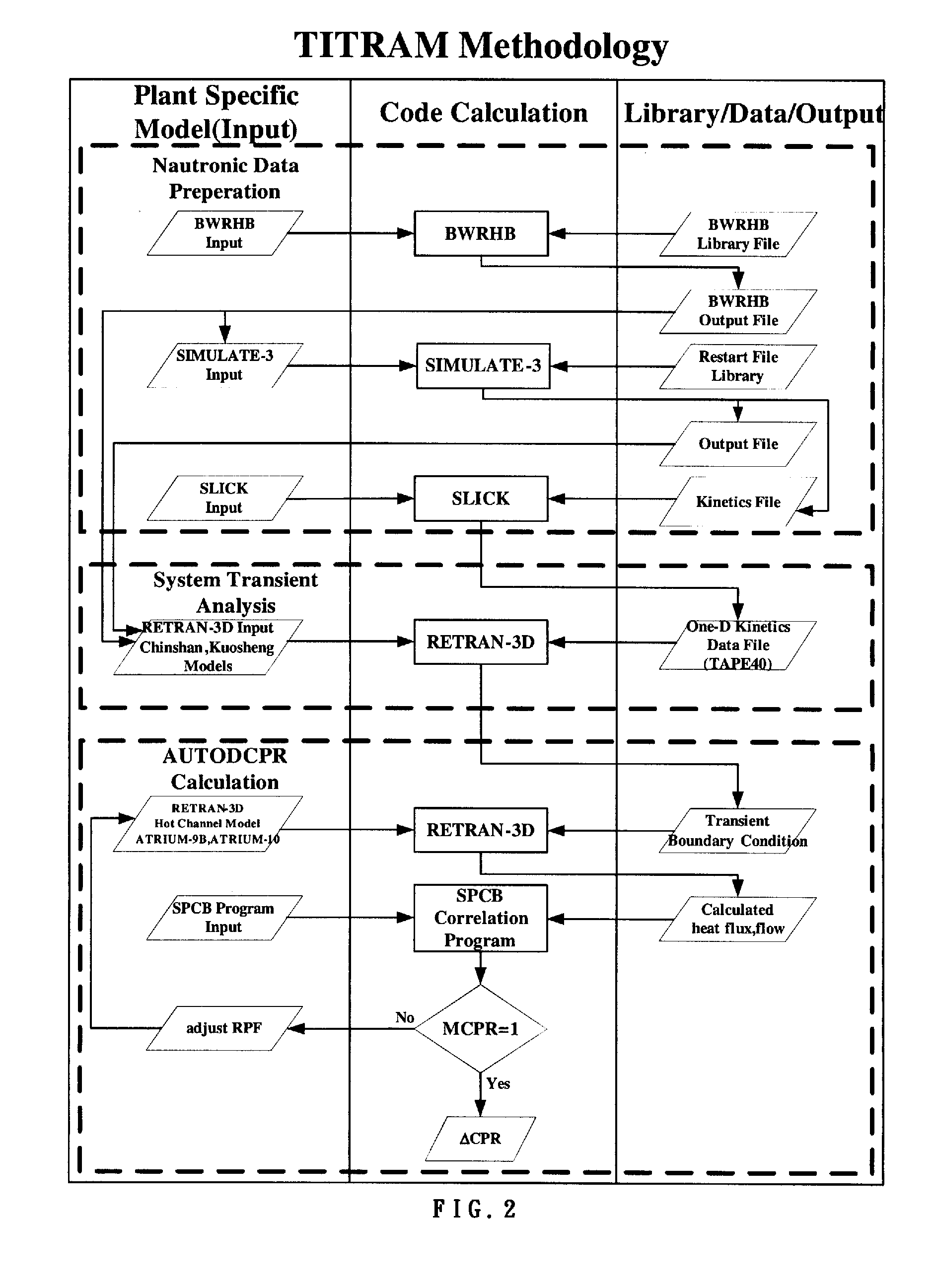Thermal limit analysis with hot-channel model for boiling water reactors
a technology of boiling water reactors and thermal limit analysis, applied in nuclear engineering problems, nuclear elements, greenhouse gas reduction, etc., can solve the problem that the cobra-iii c program cannot be simulation, and achieve the effect of reducing the calculation tim
- Summary
- Abstract
- Description
- Claims
- Application Information
AI Technical Summary
Benefits of technology
Problems solved by technology
Method used
Image
Examples
embodiment 1
[0031]The analytical method in the invention is applied to transient DCPR calculation for a reactor core that has 100% power / 105% flux, feedwater control failure and no bypass.
[0032]Please refer to FIGS. 1, 2 and 3 for the basic process flow diagram for transient DCPR, the establishment of RETRAN hot channel model by Step a as explained in FIG. 4, the effect of hot channel radial power ratio variation on fuel inlet flux for the RETRAN hot channel model for a reactor core under 100% power / 105% flux as shown in FIG. 5 and set by Step b in Embodiment 1, and node diagram for 2nd nuclear power plant in Step c in Embodiment 1. For the process flow diagram for the Step d in Embodiment 1, please refer to FIG. 3.
[0033]As shown in the figure: the embodiment conducted event analysis for No. 2 reactor in 2nd Nuclear Power Plant with feedwater control failure and no bypass. The reactor core operation condition is 100% power / 105% flux. The reactor core for 2nd Nuclear Power Plant has 624 fuel bun...
embodiment 2
[0061]The analytical method in the invention is applied to transient DCPR calculation for a reactor core that has 40% power / 50% flux, feedwater control failure and no bypass.
[0062]The flow process and Step a are the same as those in Embodiment 1.
[0063]Step b: Transient simulation follows standard inspection process NRUG-0800 and conditions based on supplier's conservative assumption are entered into the basic mode in RETRAN system. The assumptions for feedwater failure and no bypass are as follows:
[0064]Neutron analysis and calculation uses Licensing Base to consume until the End of Cycle (EOC). For power distribution, peak power is at the top of reactor core.
[0065]Stop valve shuts off within 0.1 second.
[0066]During transient period, feedwater temperature is constant.
[0067]When the steam top tank pressure reaches 1095.7 psia, it takes 0.07 second of delay for reactor protection system to immediately shut down the reactor.
[0068]When neutron flux reaches 122%, it takes 0.11 second (0....
PUM
 Login to View More
Login to View More Abstract
Description
Claims
Application Information
 Login to View More
Login to View More - R&D
- Intellectual Property
- Life Sciences
- Materials
- Tech Scout
- Unparalleled Data Quality
- Higher Quality Content
- 60% Fewer Hallucinations
Browse by: Latest US Patents, China's latest patents, Technical Efficacy Thesaurus, Application Domain, Technology Topic, Popular Technical Reports.
© 2025 PatSnap. All rights reserved.Legal|Privacy policy|Modern Slavery Act Transparency Statement|Sitemap|About US| Contact US: help@patsnap.com



